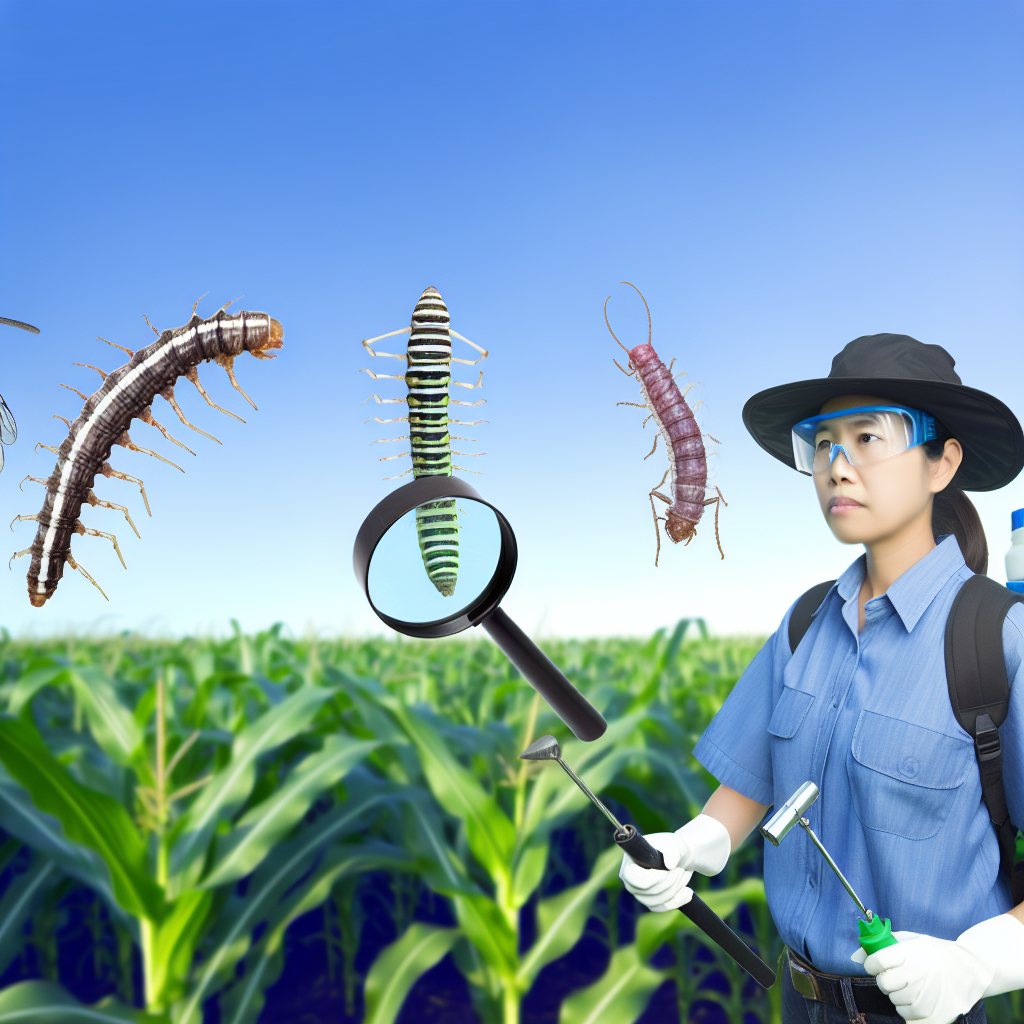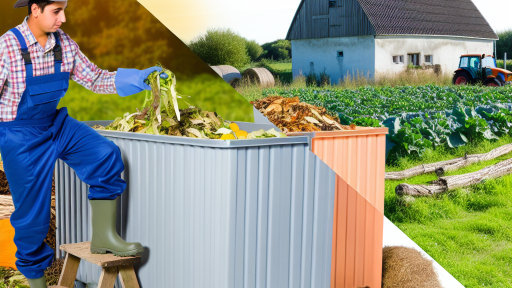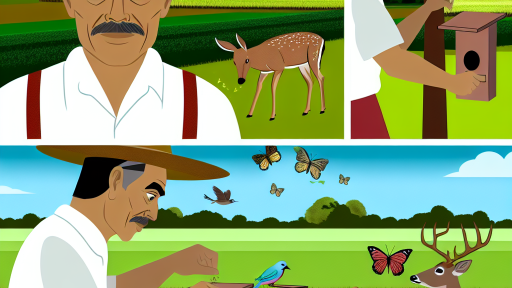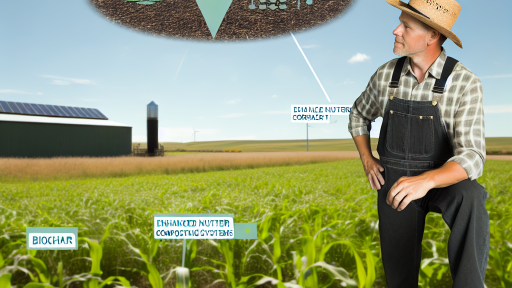Introduction to Integrated Pest Management
Definition of Integrated Pest Management
Integrated Pest Management, or IPM, combines different management strategies.
It aims to control pest populations effectively.
IPM emphasizes knowledge of pests and their interactions with the environment.
This method considers the life cycle of pests.
Additionally, it takes into account beneficial organisms in the ecosystem.
Importance of IPM
Implementing IPM leads to sustainable agricultural practices.
Farmers reduce reliance on chemical pesticides using this strategy.
Consequently, IPM minimizes environmental impacts.
Furthermore, it promotes the health of non-target organisms.
By using IPM, farmers can maintain crop yields.
Core Principles of IPM
- Monitoring and identifying pests accurately is crucial.
- Understanding pest biology and behavior enhances management tactics.
- Utilizing multiple control methods ensures effective pest suppression.
Farmers must evaluate control methods regularly.
They should adapt their strategies based on latest research and results.
Benefits of Adopting IPM
- IPM reduces economic losses from pest damage.
- This approach enhances crop quality and yield.
- Farmers often experience improved safety for workers and consumers.
As a result, IPM contributes to environmental sustainability.
It integrates pest control into a broader agricultural framework.
Understanding Common Crop Pests
Identification of Common Crop Pests
Identifying common crop pests is essential for effective management.
Transform Your Agribusiness
Unlock your farm's potential with expert advice tailored to your needs. Get actionable steps that drive real results.
Get StartedCaterpillars, aphids, and beetles pose significant threats to crops.
Observation helps recognize the signs of pest infestation.
For example, caterpillars create irregular holes in leaves.
Aphids leave a sticky substance called honeydew on plants.
Beetles often munch on the foliage, leaving distinct patterns.
By knowing what to look for, farmers can act quickly.
Damage Assessment of Crop Pests
Assessing damage helps prioritize pest control measures.
First, evaluate the extent of infestation.
This includes counting the number of pests present.
Next, examine the affected crops for signs of damage.
Stunted growth, discoloration, and wilting are common symptoms.
Additionally, necrotic spots on leaves indicate severe damage.
Determine the economic threshold to decide on intervention.
For instance, if pest numbers exceed expected thresholds, action is necessary.
Impact on Crop Yields
Crop pests can drastically reduce yields if left unchecked.
Losses range from minor to devastating based on pest type.
Early intervention prevents significant financial losses for farmers.
Farmers should monitor pest dynamics throughout the growing season.
Implementing integrated pest management (IPM) strategies is vital.
Such strategies address pest problems while minimizing risks.
Therefore, understanding pests and their impacts is crucial for success.
Cultural Control Techniques
Crop Rotation
Crop rotation improves soil health and fertility.
It disrupts the life cycles of pests and diseases.
By changing crops, farmers can reduce pest populations.
Showcase Your Farming Business
Publish your professional farming services profile on our blog for a one-time fee of $200 and reach a dedicated audience of farmers and agribusiness owners.
Publish Your ProfileFor instance, rotating between legumes and cereals is effective.
This practice enhances biodiversity in the farming ecosystem.
Additionally, it allows nutrients to be replenished naturally.
Farmers should carefully plan their crop sequences.
Consequently, they can maximize benefits and minimize risks.
Sanitation
Sanitation is a crucial part of integrated pest management.
It involves keeping fields clean and free of debris.
Regularly removing plant residues helps prevent pest infestations.
Farmers must also control weeds, which can harbor pests.
Properly disposing of infected plants reduces disease spread.
Furthermore, maintaining clean equipment minimizes contamination.
With good sanitation practices, pests can be kept at bay.
Resistant Varieties
Planting resistant varieties is an effective pest control method.
These varieties are genetically developed to withstand pests.
Such plants can significantly reduce the need for pesticides.
Farmers should research available resistant cultivars for their crops.
Choosing the right variety can enhance yield and profitability.
Moreover, using diverse resistant crops boosts resilience.
Resistant varieties contribute to sustainable farming.
Explore Further: Water-Saving Technologies in Sustainable Agriculture
Biological Control Methods
Using Natural Predators
Natural predators can effectively control pest populations.
Many farmers benefit from introducing these beneficial insects.
Ladybugs, for instance, feast on aphids.
Similarly, lacewings target pest larvae.
Moreover, birdhouses attract insect-eating birds.
These birds help reduce pest numbers organically.
Implementing Parasitic Solutions
Parasitic insects serve as another form of biological control.
For example, parasitic wasps lay eggs inside host pests.
This process ultimately leads to the host’s demise.
Farmers can purchase these wasps through reputable suppliers.
These wasps help maintain a balanced ecosystem in crops.
Promoting Biodiversity
Encouraging biodiversity supports biological control methods.
Diverse plantings attract a variety of beneficial insects.
Planting flowers alongside cash crops can be advantageous.
In addition, diverse habitats enhance predator success rates.
As a result, farmers can significantly decrease pest populations.
Education and Training
Farmers must understand how to implement these methods effectively.
Workshops and training sessions can improve knowledge.
Moreover, local agricultural extensions often provide resources.
These initiatives help farmers adopt successful practices.
Showcase Your Farming Business
Publish your professional farming services profile on our blog for a one-time fee of $200 and reach a dedicated audience of farmers and agribusiness owners.
Publish Your ProfileUltimately, community support leads to greater adoption of biological controls.
You Might Also Like: Crop Rotation Planning Methods For Sustainable Agriculture
Mechanical and Physical Controls: Traps, Barriers, and Handpicking
Traps as a Control Method
Traps effectively reduce pest populations in crops.
They attract pests using bait or pheromones.
Common trap types include sticky traps and pheromone traps.
Set traps in strategic locations for maximum effectiveness.
Regularly check and maintain traps to ensure functionality.
Using Barriers to Protect Crops
Barriers create a physical obstacle to prevent pest entry.
Row covers protect seedlings from insects and harsh weather.
Garden nets are effective against flying or crawling pests.
Ensure barriers are well-fitted to avoid gaps.
Inspect barriers regularly to repair any damage.
Handpicking Pests: A Simple Solution
Handpicking is a straightforward and effective method.
Inspect plants daily during pest season for visible pests.
Remove pests by hand and place them in a bucket of soapy water.
This method is especially effective for larger pests.
Encourage others to participate for better results.
Learn More: Sustainable Livestock Housing Design Principles And Tips
Chemical Control: Safe Pesticide Application and Integrated Use
Understanding Pesticide Safety
Maintaining safety during pesticide application is crucial.
Farmers must follow safety guidelines to protect themselves.
Moreover, safe practices prevent harm to beneficial insects.
Proper clothing and equipment reduce exposure to harmful chemicals.
Always read labels to understand the risks and precautions.
Types of Pesticides
Pesticides fall into several categories based on their targets.
- Insecticides target insect pests specifically.
- Herbicides focus on controlling unwanted plants.
- Fungicides combat fungal diseases in crops.
- Nematicides deal with harmful nematodes in the soil.
Selecting the right pesticide is vital for effective pest control.
Integrated Pest Management (IPM)
IPM combines chemical, biological, and cultural control methods.
This approach minimizes pesticide use while maximizing crop health.
Regular monitoring helps identify pest populations early.
Furthermore, it allows for targeted pesticide application.
Safe Application Techniques
Applying pesticides requires precise techniques to enhance safety.
Use appropriate machinery calibrated for effective distribution.
Avoid spraying during windy conditions to prevent drift.
Timing plays a critical role; apply pesticides when pests are most vulnerable.
Post-Application Practices
Post-application safety is as important as the application itself.
Keep people and pets away from treated areas for specified times.
Properly dispose of pesticide containers according to regulations.
Furthermore, clean equipment thoroughly to avoid contamination.
Regulatory Compliance
Adhering to regulations ensures that pesticide use is safe.
Farmers must register pesticides with local agricultural agencies.
Documentation helps trace pesticide application history.
Showcase Your Farming Business
Publish your professional farming services profile on our blog for a one-time fee of $200 and reach a dedicated audience of farmers and agribusiness owners.
Publish Your ProfileAdditionally, staying informed about new regulations is essential.
Uncover the Details: Conserving Biodiversity in Agricultural Landscapes

Monitoring and Scouting
Importance of Regular Crop Inspection for Pest Detection
Regular crop inspection is essential for effective pest management.
Farmers must identify pests early to reduce crop damage.
Monitoring helps to understand pest population dynamics over time.
Additionally, it allows farmers to evaluate the effectiveness of control measures.
Benefits of Scouting
Scouting provides real-time information about pest presence.
This process aids in making informed decisions for pest control.
Moreover, it promotes timely interventions that can save crops.
Farmers can assess the severity of pest infestations during inspections.
Regular scouting reduces the need for broad-spectrum pesticides.
Effective Monitoring Techniques
Utilizing traps can help capture and identify pests accurately.
Visual inspections allow identification of pest life stages.
Employing technology, like drones, enhances the monitoring process.
Additionally, using pheromone lures attracts specific pests for study.
Developing a Scouting Schedule
Creating a scouting schedule ensures consistent monitoring efforts.
Farmers should align scouting with key growth stages of the crop.
Establishing regular intervals, such as weekly, enhances detection rates.
Record-keeping during scouting aids in understanding pest trends.
Collaboration and Knowledge Sharing
Farmers can benefit from sharing scouting findings with peers.
This exchange of information fosters a better understanding of regional pest issues.
Joining local agricultural groups can enhance collective pest management strategies.
Additionally, collaboration with agricultural experts provides valuable insights.
Case Studies: Successful IPM Implementation in Various Crop Systems
Cereal Crops
Cereal farmers in Iowa adopted integrated pest management strategies effectively.
They combined biological control with crop rotation.
This approach minimized reliance on chemical pesticides.
As a result, pest populations decreased significantly.
Farmers noted improved soil health and higher yields.
Vegetable Production
A team from the University of California introduced an IPM program for vegetable crops.
They emphasized the use of resistant plant varieties.
This tactic reduced the incidence of common pests.
Additionally, the inclusion of beneficial insects helped boost pest control.
Farmers reported higher marketable yields and reduced pesticide costs.
Fruit Orchards
In Central Florida, orchard managers implemented a comprehensive IPM strategy.
They used trap crops to attract pests away from main species.
This method effectively decreased pest pressure on fruit trees.
Moreover, monitoring helped in timely interventions.
This led to healthier fruit trees and more abundant harvests.
Row Crops
Farmers in Nebraska focused on combining cultural practices with biological controls.
Intercropping with legumes improved soil health and pest resistance.
Showcase Your Farming Business
Publish your professional farming services profile on our blog for a one-time fee of $200 and reach a dedicated audience of farmers and agribusiness owners.
Publish Your ProfileRoutine scouting allowed for early detection of pest outbreaks.
This proactive approach reduced the need for chemical applications.
Ultimately, it increased profitability for farmers in the area.
These case studies highlight the effectiveness of integrated pest management.
Diverse techniques lead to sustainable agricultural practices.
By sharing knowledge and success stories, more farmers can adopt IPM strategies.
Continued research and collaboration will further improve pest management efforts.
Future Trends in IPM: Innovations and Advances in Pest Management
Technological Advancements
Technology is revolutionizing integrated pest management (IPM).
Precision agriculture tools enhance pest detection capabilities.
Farmers now use drones to monitor crop health more efficiently.
Moreover, data analytics provides insights into pest behavior.
Farmers can make informed decisions based on real-time data.
Biological Control Agents
Researchers are exploring new biological control options.
This includes beneficial insects that target specific pests.
Additionally, microorganisms play a significant role in pest management.
These organisms can naturally suppress pest populations.
Using biodiversity improves the resilience of crops.
Genetic Innovations
Genetic engineering is making significant strides in agriculture.
Crops are being developed to resist specific pests and diseases.
This reduces the need for chemical pesticides substantially.
Furthermore, gene editing techniques are advancing rapidly.
These innovations promise to enhance crop yields sustainably.
Consumer Awareness and Demand
Consumer demand for sustainable practices is growing.
People are increasingly favoring organic and IPM-grown products.
This shift encourages farmers to adopt environmentally friendly practices.
Moreover, transparency in farming practices boosts consumer trust.
As a result, businesses must adapt to meet changing consumer preferences.
Collaboration and Knowledge Sharing
Collaboration among farmers is becoming common.
Sharing knowledge and experiences helps improve pest management strategies.
Farmers can learn from one another’s successes and challenges.
Organizations are facilitating workshops and training sessions.
These initiatives promote the dissemination of best practices.
Additional Resources
Making sense of Integrated Pest Management (IPM) in the light of …
New Integrated Pest Management Paradigm for the Modern Age …




